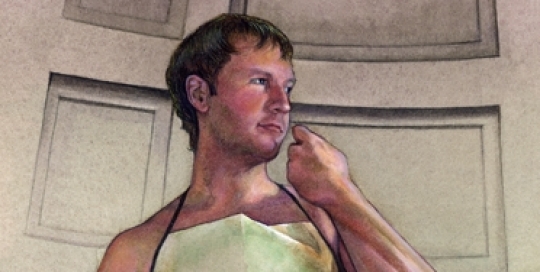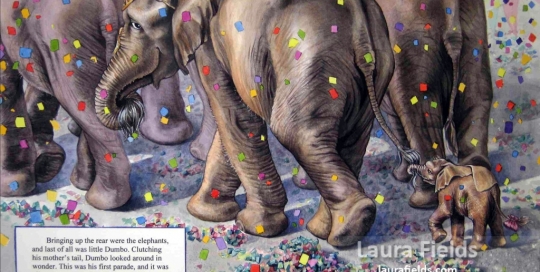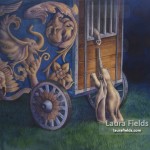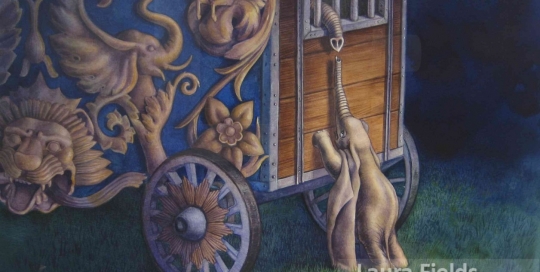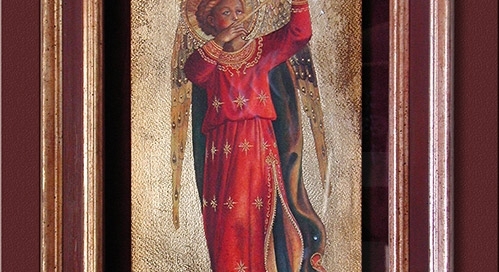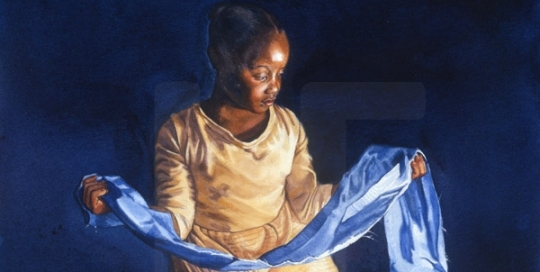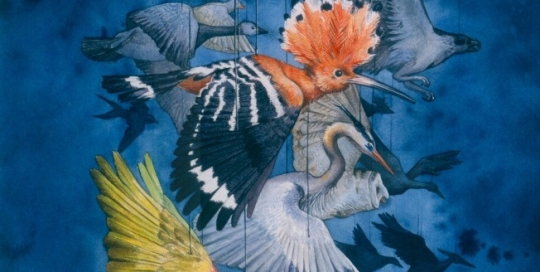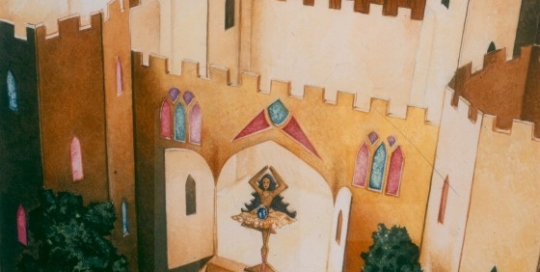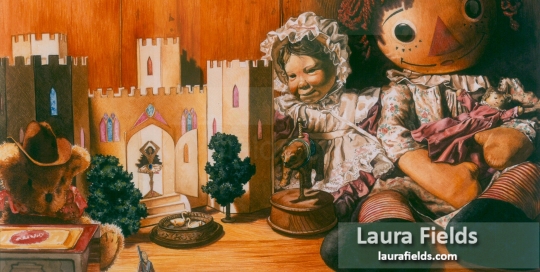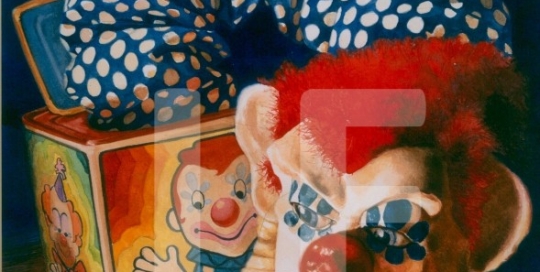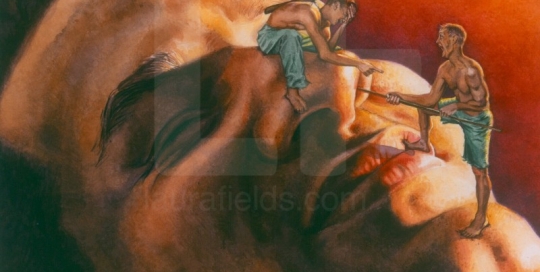Michelangelo’s David O’Brien
Illustrations, Watercolors
avid is a masterpiece of Renaissance sculpture created between 1501 and 1504, by the Italian artist Michelangelo. The marble statue of a standing male nude is a favored subject in the art of Florence. Since its unveiling in 1504, David has become an iconic statue, instantly recognized around the world and attracting millions of tourists every year.
I will never forget my visit to the Academia in Florence, Italy, where Michelangelo’s David stands upon his marble base. The image of his physique and the indelible mark that Michelangelo’s skills have left upon me will never fade. What struck me on my visit to Italy, whether it be Rome, Florence, Venice, or any other city, was the incredibly odd nature of the tourist trade. The country’s priceless statues and works of art have been re-imagined in the most ludicrous ways. The Trevi Fountain is sold as pencil sharpener or a beach towel. The Sistine Chapel is printed on a shower curtain or The Laocoon is for sale as an umbrella stand. And not to be outdone, the David statue, in Florence, can be bought as an image on an apron with the Italian colors behind him. I could not resist the absurdity and created my own image with David’s likeness. The Irish tourist, in the flesh, would pose in the exact posture as Michelangelo’s David wearing the apron. He would appear nude, but would not actually expose himself to the viewer by means of the apron. No man could hope to equal the grace and perfection of the actual statue, anyway, in my opinion…
Watercolor on Windsor Newton cold press (signed and numbered prints available)
Fra Angelico Angel
Renaissance, Watercolors
– February 18, 1455) was an Early Italian Renaissance painter described by Vasari in his Lives of the Artists as having “a rare and perfect talent”.
Fra Angelico was working at a time when the style of painting was in a state of change. This process of change had begun a hundred years previous with the works of Giotto and several of his contemporaries, notably Giusto de’ Menabuoi, both of whom had created their major works in Padua, although Giotto was trained in Florence by the great Gothic artist, Cimabue, and painted a fresco cycle of St Francis in the Bardi Chapel in the Basilica di Santa Croce. Giotto had many enthusiastic followers, who imitated his style in fresco, some of them, notably the Lorenzetti, achieving great success.
In this piece, I created a watercolor reproduction of one of the angels from the Linaioli Triptych. The figure is one of many musical angel that border the central panel of the altarpiece in the Tabernacle of the Linaioli. The tabernacle is in the National Mueum of San Marco in Florence Italy. The angel is painted with watercolor, but gesso was used for small areas of raised embellishments and gold leaf was applied to the background and sanded to reveal a red undertone. I built the frame specifically for the piece, painted and adorned the panels and gold leafed the frame as well. This was a commissioned piece and is owned by a private buyer.
Watercolor on Windsor Newton cold press with gesso and gold leaf. Privately owned.

